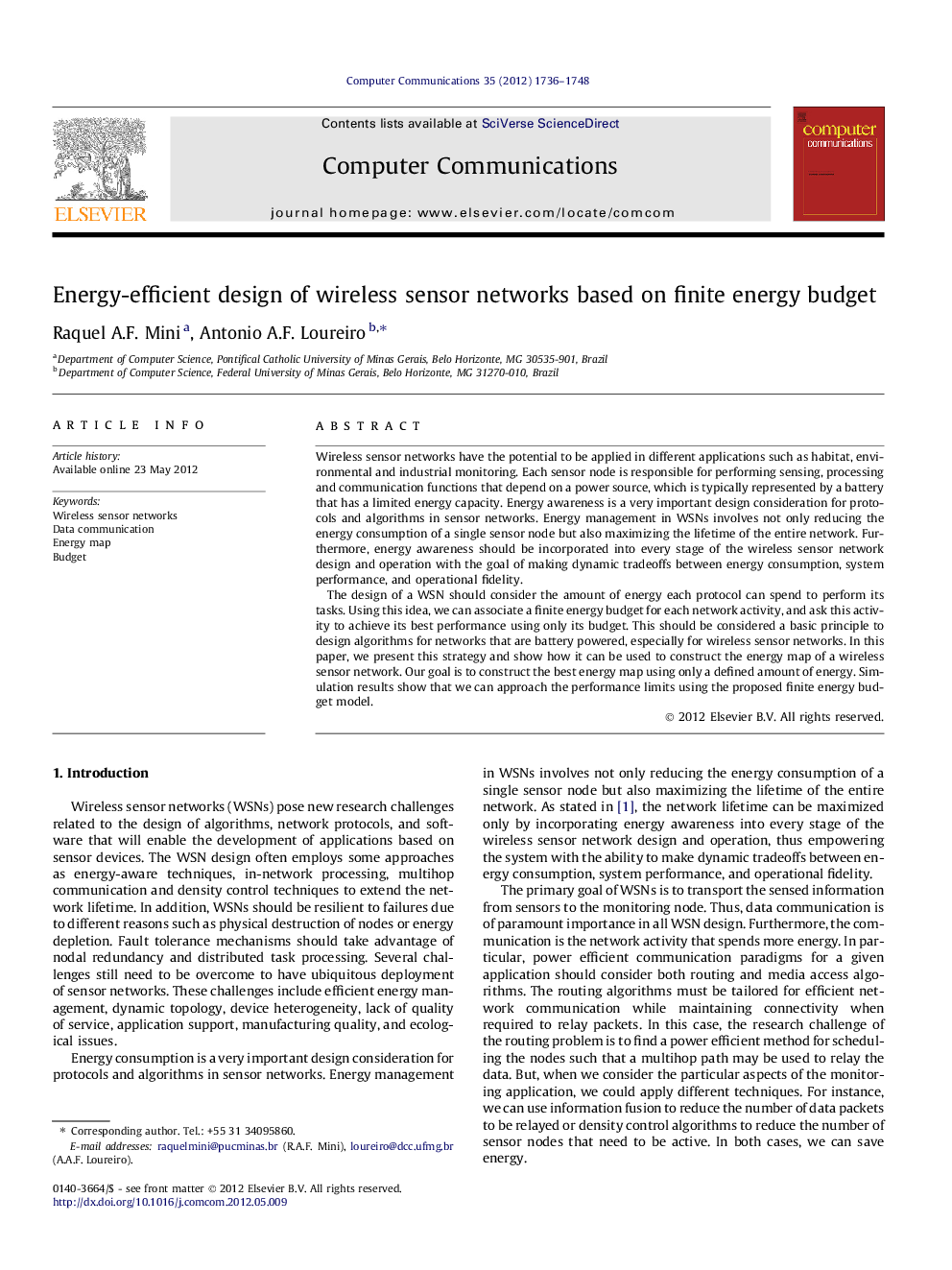| کد مقاله | کد نشریه | سال انتشار | مقاله انگلیسی | نسخه تمام متن |
|---|---|---|---|---|
| 448448 | 693570 | 2012 | 13 صفحه PDF | دانلود رایگان |

Wireless sensor networks have the potential to be applied in different applications such as habitat, environmental and industrial monitoring. Each sensor node is responsible for performing sensing, processing and communication functions that depend on a power source, which is typically represented by a battery that has a limited energy capacity. Energy awareness is a very important design consideration for protocols and algorithms in sensor networks. Energy management in WSNs involves not only reducing the energy consumption of a single sensor node but also maximizing the lifetime of the entire network. Furthermore, energy awareness should be incorporated into every stage of the wireless sensor network design and operation with the goal of making dynamic tradeoffs between energy consumption, system performance, and operational fidelity.The design of a WSN should consider the amount of energy each protocol can spend to perform its tasks. Using this idea, we can associate a finite energy budget for each network activity, and ask this activity to achieve its best performance using only its budget. This should be considered a basic principle to design algorithms for networks that are battery powered, especially for wireless sensor networks. In this paper, we present this strategy and show how it can be used to construct the energy map of a wireless sensor network. Our goal is to construct the best energy map using only a defined amount of energy. Simulation results show that we can approach the performance limits using the proposed finite energy budget model.
Journal: Computer Communications - Volume 35, Issue 14, 1 August 2012, Pages 1736–1748